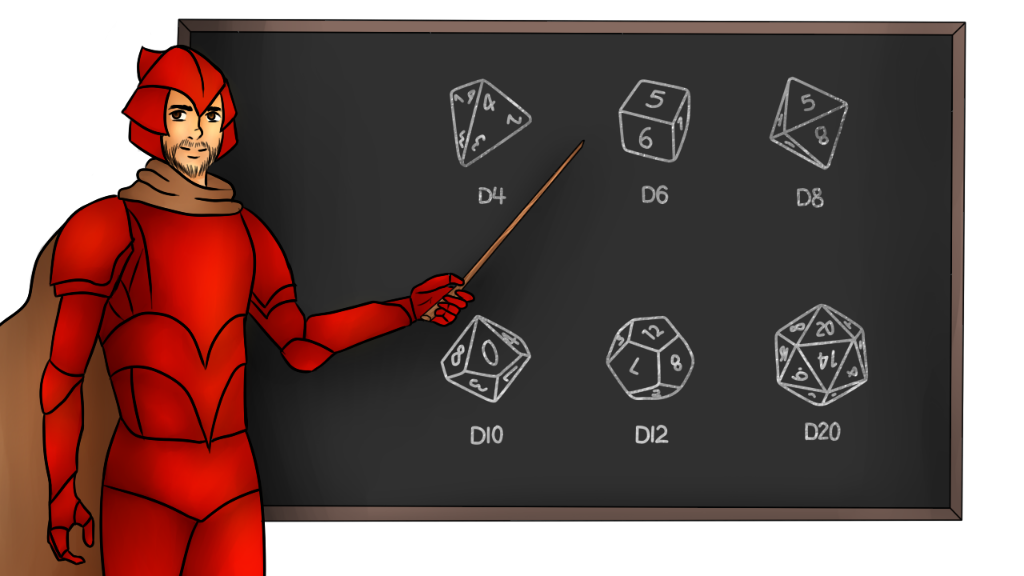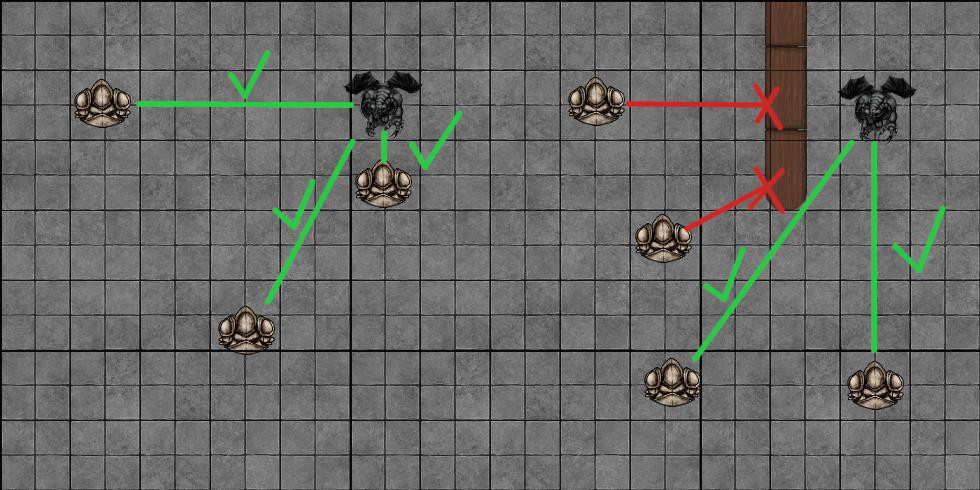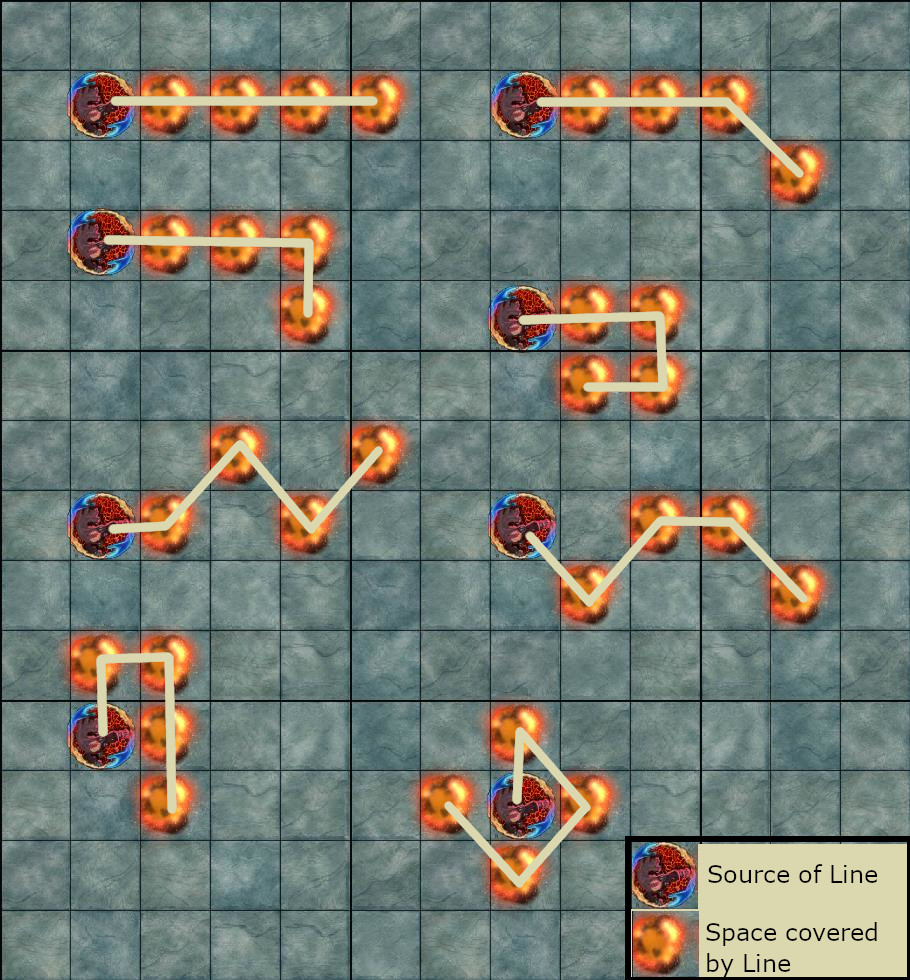
Here, you will find basic rules that affect almost every element of IWS.
Complexity and Beginner Tag
Ishanekon: World Shapers has over 2000 character options. This is way too overwhelming for most first-time players of this system, understandably. This is why we added multiple tags to make it easier for you and reduce the number of features to something more reasonable.
The beginner tag reduces all features to a few core options. It is a good place to start if this is your very first TTRPG game and you have little experience with RPG systems in general.
There is also the core tag, which contains the most important features while leaving out the more exotic effects. This is a good option if you already have experience with other TTRPGs but are new to Ishanekon: World Shapers.
There is a tag for every single character roll, so you do not have to look through caster options when you want to focus on melee weapons.
All features in this rule system have a complexity rating from 1 to 4. The complexity helps, especially new players, to narrow down their options to something more manageable while looking at the lists of Sub-Archetypes, features, abilities, or upgrades. This allows IWS to offer incredibly diverse options while still being beginner-friendly.
Complexity 1 has the simplest options. They are easy to understand, straightforward, and offer the easiest gameplay possibilities. They are usually simple and have direct effects that are used by a multitude of builds. It is hard to go wrong with complexity 1. Beginners should start here.
Complexity 2 offers more options with extra effects. It is usually not too complex but allows for more tactical options and spices up your gameplay. Most players will feel comfortable in this range since just relying on complexity 1 features can get boring rather quickly for most people. Players that already have TTRPG experience should start here.
Complexity 3 is where things start to get complicated. Most options here require specific builds and strategies to be used effectively. This is where the power gamers’ playground really starts to unfold and where you can find more exotic effects.
Complexity 4 features require advanced knowledge of this rule system and are usually extremely specific in their use. They allow for complex gameplay for advanced players.
Dice
IWS uses seven different types of dice. Dice sizes are referred to by the letter d, followed by the highest number that you can roll on it. The classical cube-shaped six-sided die is referred to as d6.
The dice used in IWS are: d4, d6, d8, d10, d12, d20, and d100.
The number of dice you need to roll at any given point is indicated by a number in front of the dice. For example, 3d6 means that you must roll three six-sided dice and, in most cases, add up the results.
If you have to roll more than one dice of the same type, you can choose to roll it once and then multiply the result with the number of dice that you had to roll. Conversely, if you have to roll dice and you have an effect that multiplies the result, you may instead just increase (or decrease) the number of dice that you have to roll by the factor of multiplication. For example, if you use the Ability Physical Bolt with the Path of Damage, you have to roll 4d10 for the damage, but the result is halved by the Path of Damage. You can choose just to roll 2d10 instead to simplify the calculations. Do not forget that if you do this, even though the minimum, maximum, and average values stay the same, the variant changes.
You will be adding additional values to the result of the dice often. A natural roll refers to the number that you rolled without adding any other modifiers. For example, if you make a Skill Check, you would need to roll a d10 and add your Skill value to it. So if you rolled a 7 and had to add 2, you would have rolled a 9, but you would also have rolled a natural 7.
Advantage and Disadvantage
There are many situations in which certain actions are easier or harder to perform than normally. This is where the advantage and disadvantage mechanic comes into play. When somebody has advantage on a roll, they will roll the corresponding dice twice and pick the better result. In case they have disadvantage, they will also roll twice but have to pick the worse of the two results.
Many features and effects can directly give you or other creatures advantage or disadvantage on many kinds of rolls, but the GM may also decide to give advantage or disadvantage if they think it is appropriate for the situation.
Advantage and disadvantage cannot stack and cancel each other out.
If a feature allows you to choose between giving or gaining either advantage or disadvantage, you can choose to do so after knowing the result of the first roll if you do it as an reaction. Otherwise, you have to decide before the roll.
Calculations
When calculating values, the results are always rounded down to the next full number unless it is stated that they should be rounded up or handled differently.
Generally speaking, you cannot reduce something to a negative value unless stated otherwise. For example, even if you can reduce incoming damage by more than the actual damage, you can not heal yourself with “negative” damage. You instead receive no damage.
When more than one multiplier is applied, these multipliers will be added to each another (not multiplied among themselves). For example, if you have two effects double the damage, your damage is tripled instead of quadrupled. Decreasing multipliers are multiplied with each other instead. So having two effects that half your damage would lead to it dealing a quarter of its original strength instead of no damage.
The Attacker and Defender calculate their multipliers separately.
Effects that add or subtract are added before multiplication on the attacker’s side and after multiplication on the defender’s side. Crafting and Harvesting materials are treated as if the creature doing those activities were an attacker.
Here is an example that combines different calculations.
Let us presume that you are attacking with a weapon that deals 1d10 damage. You roll an 8, so your base damage is 8. Thanks to your Stats, you can add 2 to the damage making it a total of 10. You have the Path of Attack, and your Tier is 3, which allows you to increase the damage of your weapon attack twice by 50%. Since these factors are increasing multiplications, they must be added up, giving you a total damage increase of 100% for a total of 20. [ (8+2)*(1+0,5+0,5)=20 ]
Let’s further assume that the creature you are attacking is resistant to your damage, which halves it to a total of 10. The creature’s Armor is 2, which reduces the damage by 2 to a total of 3. [ (20*0,5)-2=8 ]
The complete calculation, then, looks something like this: ((8+2)(1+0,5+0,5)0,5)-2=8
This is a fairly complex example. But don’t worry – most calculations during this game will be far simpler. This example should merely help you understand how the different layers interact with each other.
Multiple Simultaneous Effects
A creature that has multiple active instances of the same Status Effect, Ability, or feature is only affected by the strongest version of that effect unless the Status Effect, Ability, or feature explicitly allows for the effect to stack. Should the stronger version stop affecting them, the weaker version takes over if it’s still affecting the creature. This is true for positive and negative effects.
Effects that are allowed to stack with themselves last as long as the longest-lasting stack that has been applied.
Different negative or positive effects can stack without restrictions.
Size
Objects and creatures can have different sizes. The standard size is Medium and corresponds to a creature or object that can easily fit in a 1m x 1m x 2m area.
Objects and creatures that are bigger than that are classified as Big. If they do not fit in a 2m x 2m x 4m area, they are known as Big+. If they are twice as big, they will be categorized as Big ++, and so on.
Similarly, an object or creature that can fit in 0,5m x 0,5m x 1m is considered Small. If it fits in half that area, it is Smaller -, and so on.
For more rules on how size can affect creatures, see the creature rules.
| Size Category | Maximum Area |
|---|---|
| Big +++ | 16 m x 16 m x 32 m |
| Big ++ | 8 m x 8 m x 16 m |
| Big + | 4 m x 4 m x 8 m |
| Big | 2 m x 2 m x 4 m |
| Medium | 1 m x 1 m x 2 m |
| Small | 0.5 m x 0.5 m x 1 m |
| Small – | 25 cm x 25 cm x 50 cm |
| Small – – | 12.5 cm x 12.5 cm x 25 cm |
| Small – – – | 6.25 cm x 6.25 cm x 12.5 cm |
Seeing
When the rules talk about “seeing” something, this does not mean you need to be sensing it with your eyes. You are still “seeing” something if you have any senses that allow you to pinpoint its position accurately.
For example, a normal blinded human would not be able to “see” anything because their other senses are not sharp enough to compensate. However, a blinded bat could still “see” its surroundings thanks to its echolocation.
Targeting and Hitting
Whenever you attack something or want to affect somebody with an Ability or feature, you need to target them. To target something, you need a direct line of sight, and it has to be within range of the weapon, Ability, or feature you are using. This does not mean that you need to be able to see it. There just needs to be a straight line between you and the potential target that is not completely blocked by something else. Abilities and features that mention different conditions, like the Ability Long-Range Telepathy that allows you to target a creature you have seen before, do not need a direct line of sight.

When you target something, that thing is referred to as a target. A target can be a creature or an object.
Some effects are triggered if you hit something. You only hit something if your attack roll was successful or the target fails all Defense Rolls you forced them to do. An effect that targets something that does not have an attack roll or forces the target to make any Defense Rolls will hit automatically. Beneficial effects like healing that you target at allies or yourself also count as a hit. For more information, see the combat rules.
Area of Effect Forms
Some Abilities, weapons, and features affect an area rather than a single target. Their description will often refer to specific forms for the sake of simplicity. These are the forms you may find:
Cube
The most basic form for an area-of-effect is a cube. The cube has equal length, width, and height. To keep it simpler, cubes in IWS are described by their base length and not their volume. So when we refer to a 3 m cube, we actually mean a 27 m³ cube.
When you use a weapon, Ability, or feature that uses a cube, you need to have a direct line of sight to the cube’s center. Every creature within the cube is targeted from that center. That means the effect will not be able to target a creature within the cube if there is a wall between them and the cube’s center large enough to give them full cover.
Line

A line is any connection of spaces connected through at least one corner. The line does not have to be straight in any way. A 9 m line, for example, can be ordered in such a way that it creates a 3×3 m square.
When you use a weapon, Ability, or feature that uses a line, you need to have a direct line of sight to each space that you fill with your line. Every creature within that line is targeted from your position, just like any normal feature that targets something.
Next Chapter: Characters
